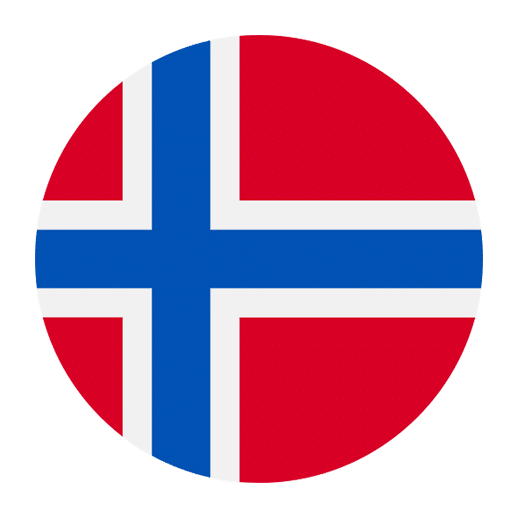Learning a new language is an exciting journey, and part of that journey involves expanding your vocabulary in various categories. One of the essential categories to master is weather and seasons. Not only is this topic frequently discussed in everyday conversations, but it also helps you understand cultural nuances and seasonal activities in Norway. In this article, we will delve into Norwegian vocabulary related to weather and seasons, providing you with useful words and phrases to enrich your language skills.
Basic Weather Terms
Let’s start with some fundamental weather-related words. Knowing these will help you describe the weather in general terms:
– **Vær** (Weather)
– **Vind** (Wind)
– **Regn** (Rain)
– **Snø** (Snow)
– **Solen** (The Sun)
– **Sky** (Cloud)
– **Temperatur** (Temperature)
– **Værmelding** (Weather forecast)
These basic terms will serve as the foundation for more specific vocabulary as we dive deeper into different weather conditions.
Describing the Weather
When talking about the weather, it’s often necessary to describe it in more detail. Here are some common adjectives and phrases to help you paint a clearer picture:
– **Solrikt** (Sunny)
– **Overskyet** (Cloudy)
– **Regnfullt** (Rainy)
– **Snørikt** (Snowy)
– **Vindfullt** (Windy)
– **Tåkete** (Foggy)
– **Kaldt** (Cold)
– **Varmt** (Warm)
– **Fuktig** (Humid)
– **Tørt** (Dry)
– **Mildt** (Mild)
For example, you could say, “Det er solrikt i dag,” which means “It is sunny today,” or “Det er kaldt og snørikt,” which translates to “It is cold and snowy.”
Seasons in Norwegian
Understanding the names of the seasons in Norwegian is crucial for discussing weather patterns and seasonal activities. Here are the four seasons:
– **Vinter** (Winter)
– **Vår** (Spring)
– **Sommer** (Summer)
– **Høst** (Autumn/Fall)
Each season comes with its own unique set of weather conditions and cultural practices. Let’s explore vocabulary specific to each season.
Winter (Vinter)
Winter in Norway is known for its cold temperatures and snow-covered landscapes. Here are some winter-related words:
– **Snømann** (Snowman)
– **Snøfnugg** (Snowflake)
– **Snøstorm** (Snowstorm)
– **Kulde** (Coldness)
– **Is** (Ice)
– **Skøyter** (Ice skates)
– **Ski** (Ski)
– **Snøball** (Snowball)
Winter activities are an integral part of Norwegian culture, so knowing these terms will help you engage in conversations about winter sports and traditions.
Spring (Vår)
Spring is a time of renewal and growth. As the snow melts and flowers begin to bloom, the weather becomes milder. Here are some spring-related words:
– **Blomster** (Flowers)
– **Vårregn** (Spring rain)
– **Knopper** (Buds)
– **Solskinn** (Sunshine)
– **Grønt** (Greenery)
– **Vårblomster** (Spring flowers)
– **Vårløsning** (Thaw)
Spring in Norway is a beautiful time, with nature coming back to life. These terms will help you describe the changes in the environment during this season.
Summer (Sommer)
Summer in Norway is a time for outdoor activities and enjoying the long days of sunlight. Here are some summer-related words:
– **Sommerferie** (Summer vacation)
– **Strand** (Beach)
– **Solkrem** (Sunscreen)
– **Bade** (To swim)
– **Grill** (Barbecue)
– **Sommerfugl** (Butterfly)
– **Bær** (Berries)
– **Varme** (Heat)
Norwegian summers are often filled with festivals, outdoor dining, and trips to the countryside. These terms will be useful for discussing summer plans and activities.
Autumn (Høst)
Autumn is a season of transition, with cooler temperatures and changing foliage. Here are some autumn-related words:
– **Løv** (Leaves)
– **Høstfarger** (Autumn colors)
– **Regnbyger** (Rain showers)
– **Sopp** (Mushrooms)
– **Innhøsting** (Harvest)
– **Kjølig** (Chilly)
– **Vindkast** (Gust of wind)
Autumn in Norway is marked by beautiful landscapes and the preparation for winter. These terms will help you discuss the seasonal changes and activities associated with autumn.
Weather Expressions and Phrases
In addition to individual words, it’s useful to know some common expressions and phrases related to weather. These will help you engage in conversations more naturally:
– **Hvordan er været?** (How is the weather?)
– **Det er varmt i dag.** (It is warm today.)
– **Det ser ut som det kommer til å regne.** (It looks like it’s going to rain.)
– **Jeg hater kulde.** (I hate the cold.)
– **Solen skinner.** (The sun is shining.)
– **Det blåser mye.** (It is very windy.)
– **Snør det?** (Is it snowing?)
– **Det er veldig kaldt ute.** (It is very cold outside.)
– **Det er overskyet og trist.** (It is cloudy and gloomy.)
These phrases will enable you to talk about the weather in more detail and understand others when they do the same.
Cultural Context
Understanding the cultural context of weather and seasons in Norway can enhance your language learning experience. For example, Norwegians have a unique relationship with the cold and snow. Winter sports like skiing and ice skating are not just hobbies but integral parts of Norwegian culture.
Moreover, the concept of **”friluftsliv”** (outdoor life) is central to Norwegian identity. This term embodies the appreciation and enjoyment of outdoor activities, regardless of the season. Whether it’s hiking in the summer or cross-country skiing in the winter, Norwegians embrace the outdoors year-round.
Another cultural aspect to consider is the celebration of **Midsummer** (St. Hans), which marks the longest day of the year. This festive occasion involves bonfires, traditional foods, and various outdoor activities. Understanding these cultural nuances will give you a deeper appreciation for the language and the people who speak it.
Practice Makes Perfect
To truly master Norwegian vocabulary for weather and seasons, consistent practice is essential. Here are some tips to help you integrate these new words and phrases into your daily routine:
1. **Watch Norwegian Weather Forecasts**: Tune into Norwegian weather channels or look up weather forecasts online. This will help you hear the vocabulary in context and improve your listening skills.
2. **Engage in Conversations**: Try to use your new vocabulary in conversations with native speakers or fellow learners. Talking about the weather is a great icebreaker and a common topic in casual conversations.
3. **Read Norwegian News Articles**: Look for news articles that discuss weather events or seasonal changes. This will expose you to more advanced vocabulary and expressions.
4. **Keep a Weather Journal**: Maintain a daily journal where you describe the weather in Norwegian. This practice will help reinforce your vocabulary and improve your writing skills.
5. **Use Language Apps**: Utilize language learning apps that focus on vocabulary building. Many apps have specific sections dedicated to weather and seasons.
6. **Flashcards**: Create flashcards with weather-related words and phrases. Review them regularly to reinforce your memory.
7. **Join Language Exchange Groups**: Participate in language exchange groups or online forums where you can practice with native speakers and other learners.
Conclusion
Mastering Norwegian vocabulary for weather and seasons is a valuable step in your language learning journey. Not only will it enhance your ability to engage in everyday conversations, but it will also deepen your understanding of Norwegian culture and seasonal traditions. By incorporating these words and phrases into your daily practice, you’ll be well on your way to becoming more fluent and confident in your Norwegian language skills. So, whether it’s sunny or snowy, embrace the opportunity to learn and explore the rich linguistic landscape of Norway.

